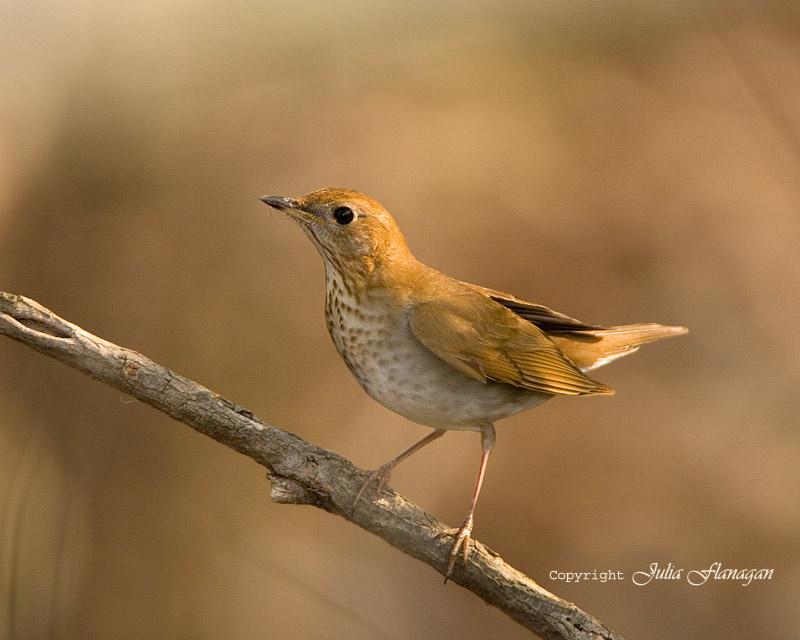
|
Veery
This is one of those birds that is named after its song - a sweet vee-er – because you're likely to hear it before you can find it. A relative of the Robin, the Veery is a smaller bird, about 6 inches long, that has reddish-to cinnamon brown feathers on its head, back, wings and tail, a brown-spotted breast and otherwise white undersides. If the light is good in the dense growth where it likes to stay, you'll see that its legs are pink. The Veery's preferred habitats are damp, dense and riverside forests and thickets in southern Canada, the Great Lakes region, and the northern Rockies in the western US, as well as from New Brunswick and Nova Scotia south along the Appalachians mountain ranges in the East. It feeds on insects, centipedes and other arthropods that it finds on the ground, often flipping leaves over as it searches, or it may catch them in the air as they escape or fly by. When the usual prey are scarce during cold weather, it will eat berries. Their nests, made of leaves, bark and other plant material, are located on the ground or near the base of a bush or small tree and will contain several greenish-blue eggs. Like the Robin, the Veery is sometimes subject to from "brood parasitism" by Brown-headed Cowbirds, which lay their eggs in the other birds' nests. During its migration, the Veery can be found in other parts of the US east of the Rockies and along the East Coast down through Mexico and Cuba. So it will usually visits the Piedmont of Virginia in fall and spring when it flies to and from its winter vacation n Central and Southern Brazil. |
Home | Upcoming Events | About Us | Resource Issues | News | Local Contacts Maps | Photos | Publications | Youth Education | FAQ's | Links | Membership |





